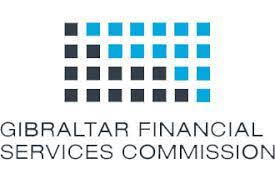Why winding up petitions are more efficient than county courts
We recently spoke with a client who for the previous three months had been chasing a customer with an outstanding invoice of just over £50,000.
The client was considering litigation in the county court to retrieve the money and I suggested that a quicker and more cost-effective route might be to issue a winding-up petition.
I explained that county court litigation is laborious and would attract an immediate cost of £2,500 in court fees, which are 5% of the value of the claim (5% of £50k = £2,500).
Moreover, when you serve the proceedings in a county court, all the debtor has to do is file a defence, and once this happens the likelihood is your claim won’t come to trial for around 12 months, possibly longer.
Solicitors’ fees will increase your legal costs by another £3k to £4k, and additional court applications could amount to another £4k. And then, when the claim does eventually get to court, there will be a trial of the facts and a one or two day trial, which could set you back another £5k.
Therefore, bringing a £50k claim to the county court will easily cost you £12k to £15k, and for the entire period the company you’re claiming against, which could go belly up at any moment, still has the benefit of your money, interest free.
How to make a customer pay an overdue debt within 10 days
By contrast, if the debt is undisputed, you could simply issue a winding-up petition, which costs less than the county court’s £2,500 fee.
If you’ve delivered a service or sold a product, raised a credit invoice, and sent a reminder, but all your communications have gone unheeded, we strongly recommend that you stop chasing and don’t invite any disputes.
According to section 123 of the Insolvency Act 1986, your customer is rendered insolvent as they are unable to pay their debts as and when they fall due. Consequently, if the complaint meets the following conditions, you are free to issue a winding-up petition:
- The debt is overdue
- A formal demand for payment has been made
- The debt is undisputed
The moment your petition is issued, section 127 of the Insolvency Act kicks in which prohibits your customer from making any sale of assets, and reducing, transferring or distributing the company’s assets, including cash in the bank, without the court’s permission.
More importantly, you are free to advertise the petition seven working days after it’s been served, and once that happens, the debtor’s bank account is frozen. This strategy immediately grabs the debtor’s attention and forces them to deal with your invoice within 10 days.
Had you gone through the county court, the debtor would have 14 days to acknowledge the claim and a total of 28 days to file a defence, which clearly makes issuing a petition a far more attractive proposition.
Furthermore, whereas court fees are linked to the value of your claim, the cost of issuing a petition is always the same, which means the greater the value of your debt, the cheaper and more efficient this option will be.
Image Credit: Pettibone & Associates
Understanding the winding up petition: A crucial tool
In the world of insolvency, a winding up petition holds significant importance. When a company has received a statutory demand (SD) and fails to raise…
Read MoreUrgent Call to Action: Have You Invested in Beech Holdings (Manchester) Ltd?
If you or anyone you know has invested in Beech Holdings (Manchester) Ltd, it’s time to take action immediately and get in touch. The Situation…
Read MoreBankruptcy Annulment: A Fresh Start for Financial Recovery
Bankruptcy is often viewed as a last resort for individuals overwhelmed by debt, offering a path to financial relief but also leaving a significant mark…
Read MoreCastle Trust and Management Services Ltd- The Big Problem for the Gibraltar Financial Services Commission
The collapse of Castle Trust and Management Services Ltd (CTMS) has raised serious questions aboutthe role and effectiveness of the Gibraltar Financial Services Commission (GFSC)…
Read More



